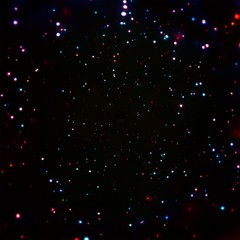Did you know there are several types of light? Each one reveals new secrets about the world around us, but only one is visible to our eyes.
Luckily, we’ve designed telescopes that can see the Universe in “invisible” light. For example, our friends at Chandra X-ray Observatory are able to study the cosmos by looking at a type of light called X-rays.
X-ray light (or X-rays) reveals the very energetic and exotic objects in space, like colliding stars and black holes. The picture above shows us what you can see in an area of the night sky – a little over half the size of the full Moon – if you look at the X-rays coming from it.
Actually, this picture shows us further into the Universe than ever seen in X-rays before, revealing lots of very faint objects that previous observations weren't able to detect.
Almost three-quarters of the light sources are black holes. That’s over 700 black holes inside this tiny section of space. If the entire sky was this densely packed, there would be about 1,000 million dangerous black holes lurking out there!
You might be wondering how we can see the black holes, as they are famous for not shining in any type of light. (That’s how they got their name!). Well, as black holes gobble up nearby material like stars or planets, the material becomes super heated and starts to glow. It’s the glowing material that we’re seeing here.
The black holes in this picture have provided scientists with plenty of new information about these bizarre objects. In fact, they have already learned something new: When the Universe was much younger, black holes didn’t grow by slowly gathering more and more material, they grew mostly in quick bursts.
Cool Fact
The colours in this picture tell us how energetic each object is: objects with the least energy are red and the most energetic are blue.
Share:














